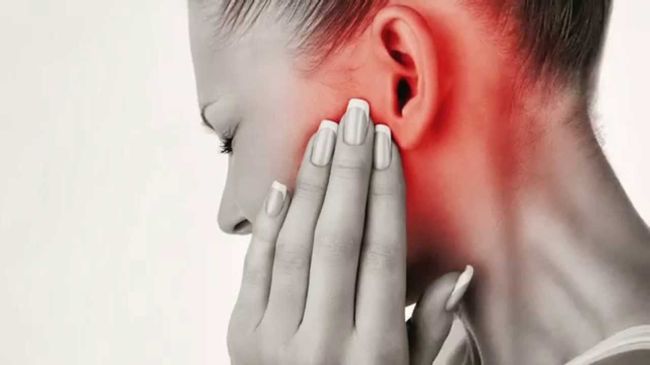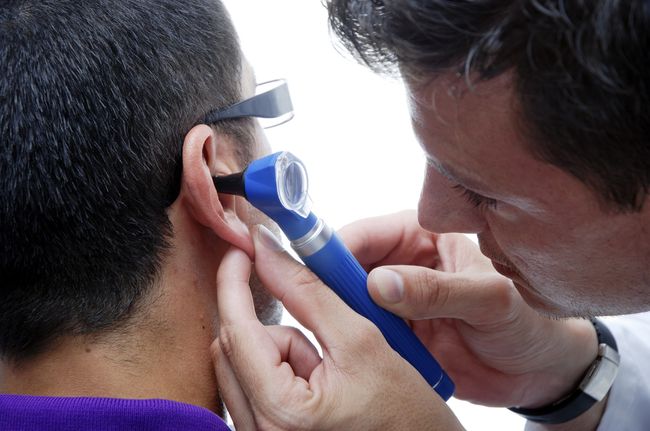Otitis in adults - how to prevent complications? Symptoms, home treatment
Inflammation of the ear threatens with serious consequences for a person. An irresponsible attitude to one's health and this sensitive organ can lead to hearing loss and other complications. Otitis in adults is a disease that must be taken seriously, to know its symptoms, consequences and treatment. In this article, the reader will receive all the necessary information, learn about medical and folk methods of treatment, and preventive measures.
Characteristics of the disease
The human ear has a complex structure and consists of the outer, middle and inner parts. Depending on this, otitis media can be localized in different tissues of the ear.
The outer ear is directly the ear canal in the form of an auricle.
Distinguish the following inflammation of the outer ear.
- perichondritis - infection of the cartilage with a subsequent inflammatory process;
- diseases of the skin (,) provoke otitis media;
- diffuse otitis media occurs if there is a skin injury with infection;
- mycosis - the development of a fungus on the skin of the ear;
- when the sebaceous glands become inflamed. Inflammation occurs due to the ingress of pathogenic microbes into the roots of miniature hairs;
- otohematoma - hemorrhage in the organ, accompanied by the development of pathogens and inflammation.
The middle ear is formed by the tympanic cavity, which includes the membrane, and the auditory tube, which balances inside the organ.
May cause the following diseases:
- inflammation of the tympanic cavity and, as a result, the membranes;
- inflammation in the auditory tube;
- infection of the skull bone as the next stage in the development of otitis media.
Infections of this part of the ear with otitis are divided into acute and chronic.
Acute otitis media is characterized by inflammation of the middle ear mucosa and discharge of pus. Purulent otitis in adults is provoked by the penetration of infection through the connecting channels (through the auditory, Eustachian tube) from the nasopharynx; this often occurs with the development of SARS, but can be caused by more specific reasons:
- strong drops when washing the nose or blowing your nose;
- the development of various infections:, typhoid,. The disease is transmitted through the blood;
- reduced , including , or .
Chronic otitis also affects the mucous membrane and forms purulent inflammation.
Otitis occurs due to:
- untreated acute otitis in the presence of other infectious diseases;
- violations of normal nasal breathing (in the event of an allergy or nasal injury);
- suppressed immune system;
- the use of drugs that depress the protective function of the body.
The inner ear consists of a labyrinth organ.
An infection can get into this part of the ear with chronic otitis media, as well as in the case of:
- the occurrence of severe injury;
- development (inflammation of the brain);
- progression.
Symptoms and consequences

Attention! Signs of otitis in adults differ depending on the location of the inflammation and the nature of its course.
With external otitis media, the auricle is affected, the symptoms can be seen with your own eyes:
- perichondritis is characterized by swelling in the form of tuberosity and pain in the auricle itself;
- with infectious skin lesions, redness, crust, weeping of the skin occur;
- diffuse otitis media causes bright itching and pus from the ear, painful sensations if you touch or pull the ear;
- with the progression of mycosis, characteristic signs appear: a feeling of congestion and noise, a deterioration in the ability to hear, itching, an unpleasant odor;
- characterized by severe pain in the ear, which are given to the face, neck and teeth. A tubercle with yellowish pus appears on the ear, painful when pressed. Pain interferes with speaking and chewing food;
- with an otohematoma, a tumor-like formation of a bright color (blue and purple) occurs, does not cause pain.
The defeat of the middle ear carries a greater risk to human health.
Advice! To minimize the consequences, early diagnosis and timely treatment of otitis media is recommended.
It is characterized by the following symptoms:
- pronounced congestion and noise;
- a clear echo (resonance) from your own voice in an inflamed ear;
- shooting pain in an abscess of the tympanic cavity. The development of infection leads to a breakthrough of the membrane and hearing loss;
- in some cases, there is an increase in body temperature (not higher than 40 degrees Celsius);
- general weakness in the body;
- throbbing pain;
With the transition of otitis media to the chronic stage, there is a constant discharge of pus, hearing worsens, and may be accompanied by regular pain in the head and ear.
Internal otitis affects the patient's vestibular apparatus and manifests itself:
- severe dizziness, impaired coordination;
- vomiting;
- increased heart rate;
- pallor of the skin;
- significant hearing loss.
A frivolous attitude to the symptoms of otitis media, insufficient treatment can cause complications. Progressive ear inflammation can cause:
- Epitympanitis - inflammation of the temporal bone.
- Paralysis of the facial nerve.
- Hernia of the skull.
- brain abscess.
- Complete hearing loss.
Attention! These consequences require urgent medical, including surgical, intervention!
Diagnosis and treatment
Before you start treating otitis, you should visit a doctor for an examination. The ENT specialist makes a diagnosis on the basis of the survey, the signs identified during the examination of the ear (otoscopy). The doctor also checks the acuity of hearing, analyzes the results of a bacteriological blood test. If necessary, x-rays and tomography of the skull are done.

Treatment of otitis in adults depends on the characteristics of the disease. The patient uses drops and takes medications, but in severe cases, surgical intervention is used in a hospital.
Attention! If timely measures are taken, all treatment can be carried out at home.
Treatment for otitis externa includes:
- the use of antibacterial, regenerating ointments;
- cold and compresses;
- extraction of fluid, opening of abscesses surgically;
- taking antibiotics;
- lubrication of bumps and boils with iodine, wetting tampons with boric alcohol and laying in the auricles;
To improve overall well-being and reduce temperature, paracetamol is prescribed. Physiotherapy can be prescribed in the clinic: UHF and UVI, especially in chronic otitis media.
Acute otitis media should be treated promptly, because the risk of complications in this case is high.
- A catheter is inserted into the auditory tube to inject antibacterial substances that eliminate inflammation. This must be done daily to eliminate pathogenic bacteria.
- The eardrum is massaged with a narrowly directed air stream.
- Reception of an imuprofen and paracetam is shown.
- Drops for otitis media are used.
- Warm compresses are made daily: cotton wool soaked in petroleum jelly and soaked in alcohol with glycerin is inserted into the ear canal. Such a compress relieves swelling and warms well.
In some cases (with severe pus), the surgeon makes a puncture of the eardrum. Hormones and antibiotics for otitis in adults in this case are administered through a catheter.
Attention! After a puncture, drops from otitis media are contraindicated.
If there is no improvement in this case, trepanation of the mastoid process of the middle ear is performed.
Chronic otitis is treated with a slightly different program, since the efficiency factor is secondary here. In this case, therapy with antibacterial drugs, washing and infusion of drugs, as well as physiotherapeutic measures are indicated:
- wash the sore ear with warm solutions of boric acid, furacillin, hydrogen peroxide;
- wash with antibiotics (with the addition of hormones);
- antibiotics and furacillin (along with other drugs: chinosol, dimexide, etc.) pour into the ear canal;
- UFO and UHF.
If a complication occurs, the treatment takes a serious turn, takes place with the use of surgical means.
Inflammation of internal otitis is eliminated with the help of enhanced antibiotic and vitamin therapy. In this case, surgical treatment is required (to avoid hearing loss): a cleansing operation is performed in the second week of taking the medication.
Folk recipes for the treatment of otitis media
Over the centuries and millennia, people have developed natural ways to eliminate inflammation in the ear. Treatment of otitis media at home involves the use of the following recipes.
For external otitis in adults, two-hour compresses from a warm alcohol solution are used (the ratio of water and alcohol: one to one).
A decoction of bay leaves is also effective: put 5 medium leaves in a glass of water, bring to a boil and let it brew. Use 2 tbsp 3 times a day, and also instill 10 drops of decoction into the sore ear.

Otitis media can be cured with garlic, onion and birch bud infusion:
- insist crushed garlic with vegetable oil for 10 days. Keep in the sun. Add glycerin to the resulting solution and instill a few drops into the ear. Before this, the solution should be warmed;
- cut off the top of the bulb, make a recess in it and pour cumin into it. Close the top, bake in the oven for half an hour. Then squeeze; instill the resulting juice before going to bed for a week, 3 drops in the ear;
- 10% tincture of birch buds relieves inflammation well and restores hearing. After moistening a cotton swab, insert into the ear for 10-15 minutes. Repeat 3-4 times a day.
Poppy and decoctions of herbs will help cure internal otitis media:
- boil 7 unripe poppy seeds in 150 ml of milk for 30 minutes. Wash the sore ear with the resulting decoction;
- pour 200 ml of boiling water with 1 tablespoon of eucalyptus, yarrow, calendula and string mixed in equal parts. After insisting for half an hour, drink the infusion throughout the day.
The above prescriptions act as additional and do not replace medical treatment.
Prevention and restoration of hearing after otitis media
How can infection be minimized? Prevention of otitis in adults involves the observance of simple rules.
- Refrain from swimming in polluted waters.
- Thoroughly clean ears after any contact with water.
- Regularly clean your ears from dirt and sulfur, maintain hygiene. But it is better to leave a minimum of sulfur, since it protects the ear canal from pathogenic microbes.
- Responsibly treat any diseases of the ears and nose.
Advice! Swimming in rivers and open water is recommended using ear plugs.
Often, people treat otitis media unreasonably lightly, not realizing that complications from this infection can lead to the most unfortunate consequences. The information in this article will help you to reasonably assess the dangers and risks of the disease, learn how to avoid it, and, if necessary, cure it.
